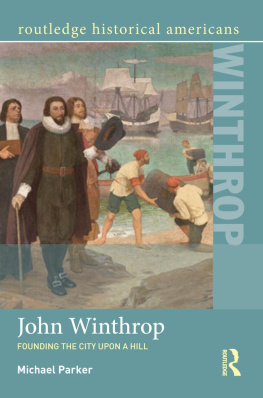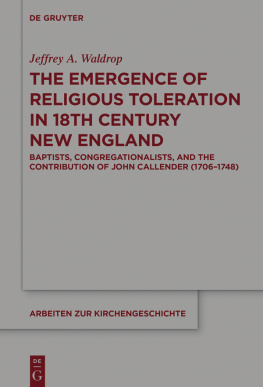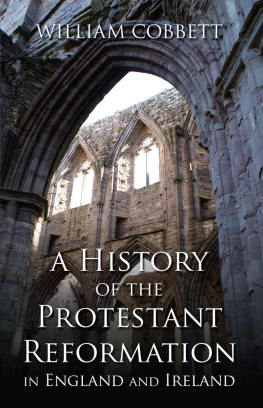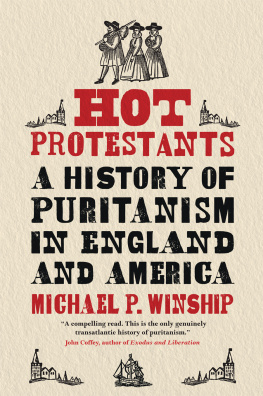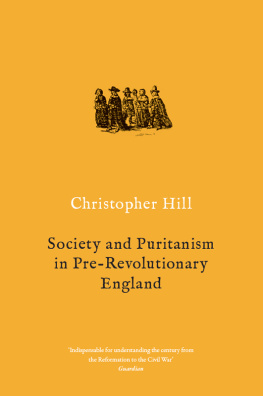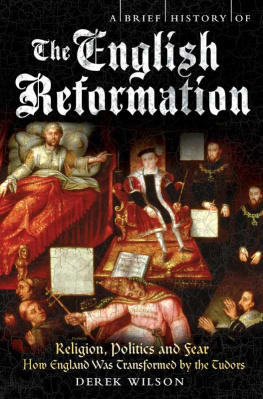Contents
Guide
Page List
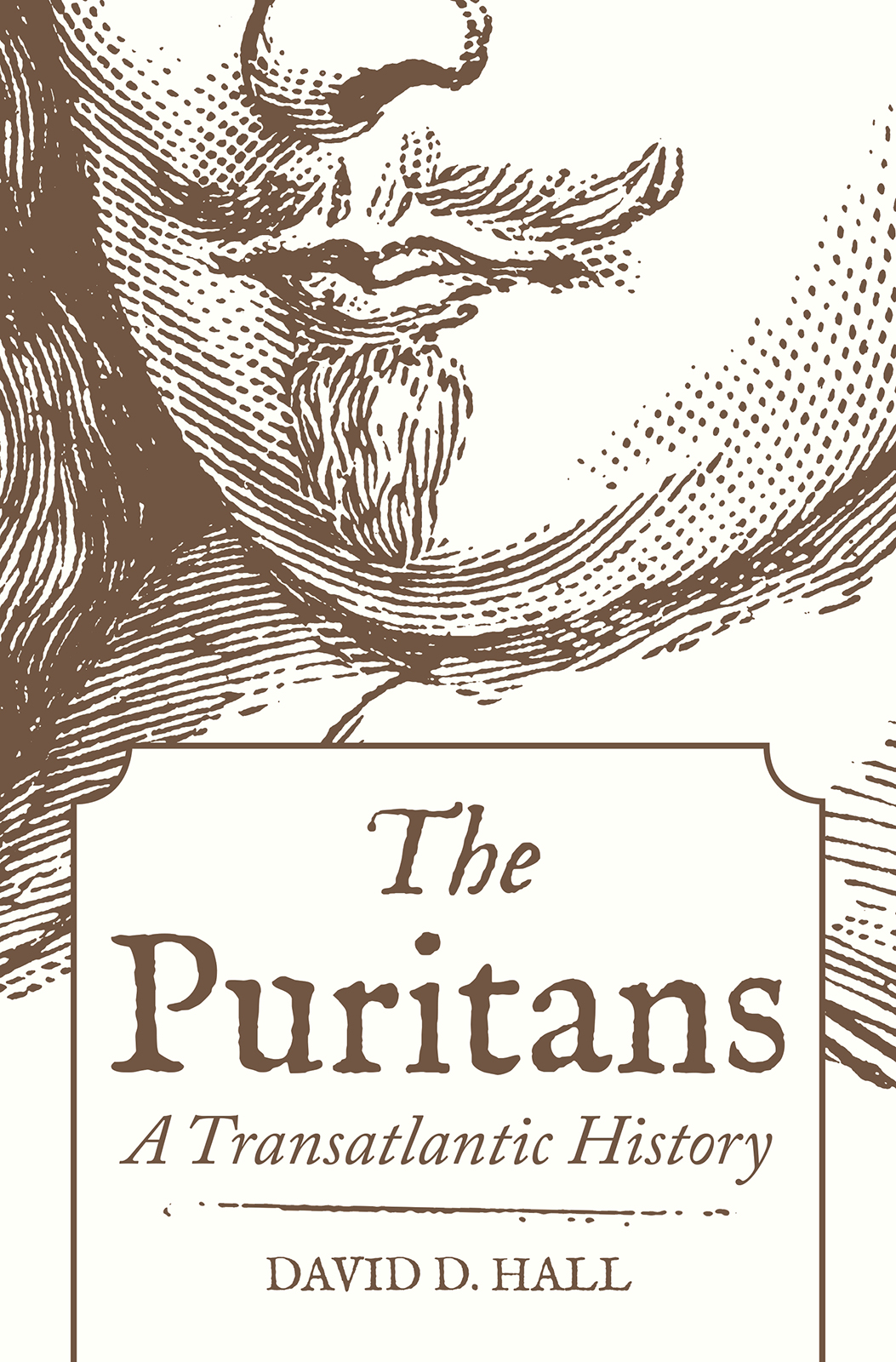
THE PURITANS
The Puritans
A TRANSATLANTIC HISTORY

David D. Hall
PRINCETON UNIVERSITY PRESS
PRINCETON & OXFORD
Copyright 2019 by Princeton University Press
Published by Princeton University Press
41 William Street, Princeton, New Jersey 08540
6 Oxford Street, Woodstock, Oxfordshire OX20 1TR
press.princeton.edu
All Rights Reserved
LCCN: 2019930947
ISBN: 978-0-691-15139-7
eISBN 978-0-691-19546-9 (ebook)
Version 1.0
British Library Cataloging-in-Publication Data is available
Editorial: Eric Crahan and Pamela Weidman
Production Editorial: Ellen Foos
Jacket Design: Layla Mac Rory
Production: Merli Guerra
Publicity: Tayler Lord and Kate Farquar-Thomson
Copyeditor: Molan Goldstein
Jacket illustration: Edward Winslow, featured in E. Benjamin Andrews, History of the United States, from the Earliest Discovery of America to the Present Time, 1913.
CONTENTS
Introduction
WHEN CHRISTENDOM IN THE WEST was swept by currents of renewal and reform in the sixteenth century, the outcome was schism. A single catholic church gave way to a world divided between Catholics and Protestants and, among Protestants themselves, to several versions of true religion. This book is about one of those versions as it unfolded in early modern Scotland and England and, many years later, was transplanted to New Englandthe Protestantism that, in its British context, acquired the nickname of puritanism.
Nicknames usually contain an ounce of truth alongside much that is distorted or downright untrue. William Bradford, who became one of the founders of new-world Plymouth, disliked this particular nickname because it implied that such people were reenacting the mistakes of an early Christian sect, the Novatians, who referred to themselves as the Cathari, the pure, hence puritans. Not this genealogy but another he would have acknowledged lies at the heart of the Puritanism I am describing, the British version of international Calvinism or, as I prefer to say, the Reformed tradition or Reformed international. On the Continent, the Reformed competed in the mid-sixteenth century with Lutherans and the Anabaptists for the allegiance of the people who abandoned Catholicism and became Protestants. The advocates of Reformed-style Protestantism in England were also competing with a fourth possibility that eventually became known as Anglicanism. For much of the late sixteenth and early seventeenth-centuries, the line between this version of Protestantism and what Puritans preferred was uncertain, for they agreed on some aspects of theology and practice. In Scotland, the party aligned with Reformed principles came much closer to succeeding, able to dominate when it came to doctrine and worship until the early decades of the seventeenth century, when its policies were disrupted by an unfriendly monarch. My answer to the question What was Puritanism? is to emphasize everything the movement inherited from the Reformed and how this inheritance was reshaped in Britain and again in early New Englandas it were, the Reformed tradition with a Scottish, English, or colonial accent.
To its parent, the Puritan movement owed the ambition to become the state-endorsed version of Christianity in England and Scotland. Theological principle lay at the heart of this ambition. On both sides of the Protestant-Catholic divide, theologians and civic leaders agreed that true religion could be readily defined. All others were falseentirely false or perhaps only in part. Either way, defending true religion against its enemies was crucial. Were error to overtake truth, vast numbers of people would never receive or understand the gospel promise of unmerited grace. Almost as crucial was a second principle, that God empowered godly kings or, as was also said, the Christian prince, to use the powers of the civil state in behalf of true religion. In early modern Britain and subsequently in early New England, Puritans took both of these assumptions for granted. A third principle concerned the nature of the church. Its role on earth was as a means of grace for all of humankind, a role complicated by the doctrine that only the faithful few would eventually be included within the gospel promise of salvation. Whether (and how) the faithful few should be set apart from hypocrites or the unworthy was a question that eventually differentiated some versions of Puritan practice from others.
Because the Puritan movement took a strong stand on the Bible as law and insisted that the state churches in England and Scotland eliminate all aspects of Catholicism, it became intensely controversial. Although opposed by many, it enjoyed surprising success in mid-sixteenth-century Scotland. In the 1550s, the government in that country was led by a Catholic queen serving in the place of her daughter, Mary Stuart, who returned from France in 1561 and began to rule in her own right. For reform to succeed, she would have to be circumvented or, as finally happened, defeated in civil war. Thereafter, the reformers were able to enact most of their agenda. Elizabeth I, who became monarch of England in 1558, was a Protestant. But she disliked the reformers who clamored for a thorough reformation and thwarted them at every turn. Nonetheless, these people learned how to work around her, aided in doing so by high-placed officials in the government, some of the bishops in the state church and, depending on the issue, members of Parliament. Thanks to these circumstances, the Puritan movement began to thriveparadoxically, as much within the state church as on its margins.
In the early chapters, I describe the substance of a thorough or, to quote John Knox, a perfect reformation and the politics that arose in the wake of this concept. Worship had a singular importance in this politics, the source of crisis after crisis in early modern Britain. Important, too, was the nature of the visible church as a community headed, in principle, by Christ as king. The implications of this argument were resisted by monarchs who insisted on what became known as the royal supremacy. By the middle of the seventeenth century as well as earlier, British and colonial Puritans were also disputing how best to describe the relationship between unmerited grace and the duties or activity of the redeemed, a quarrel often focused on how to achieve assurance of salvation. As this brief summary suggests, I do my best throughout this book to associate the Puritan movement with theological principles and biblical precepts. Always, however, I situate these commitments in an ongoing politics shaped by social, cultural, and economic circumstances, and especially by the interests of the civil state.
Chronology and comparison drive the structure of The Puritans, with two exceptions. The story begins ().
How the politics of religion unfolded after 1560 is traced in the chapters that follow (, which covers their story after 1640. An epilogue traces the workings of memory on both sides of the Atlantic: Puritans not in their own voice but as represented by nineteenth- and twentieth-century novelists, denominational historians, cultural critics, and the like.
To narrate the history of Puritan-style reformation in England and Scotland is not unusual, but treating them side by side as companions who share the same project is less common. From the beginning, the two were entangled, Scottish and English exiles mingling in Geneva, Frankfurt, and elsewhere during the period when England was ruled by Mary Tudor or in pre-1553 England, where John Knox lived at a moment when Protestants in his Scottish home-land could not worship publicly. The partisans of a perfect reformation in England admired what Knox and his heirs accomplished, for the Scottish reformers avoided most of the compromises that dogged the Elizabethan Settlement (see concludes with an extraordinary moment in Scottish religious and political history, the insurgency of 163738 that led to the National Covenant of 1638 and the return of presbyterian governance for the state church. The implications for England were immense, for the Scottish revolution provoked two brief episodes of civil war with the government of Charles I. When his army was defeated, the king had to summon a new Parliament, which began to chip away at royal authority and revamp or curtail aspects of worship, doctrine, and structure within the Church of England. Because Charles I regarded royal authority and an episcopal church structure as two sides of the same coin, space for compromise was scant. The outcome was civil war in England between Royalists and Parliamentariansa British war once the Scottish government decided to support the English Parliament against the king.


